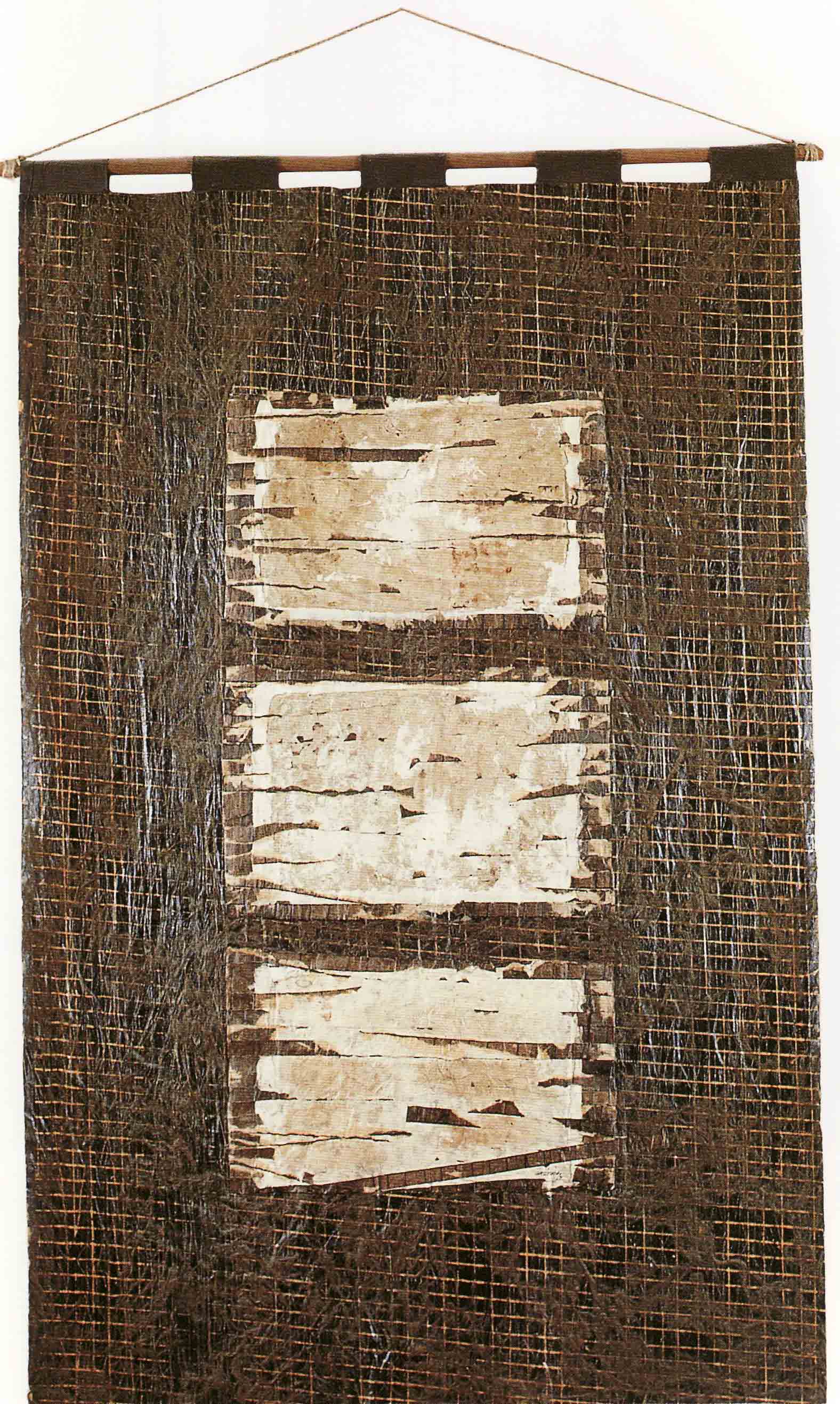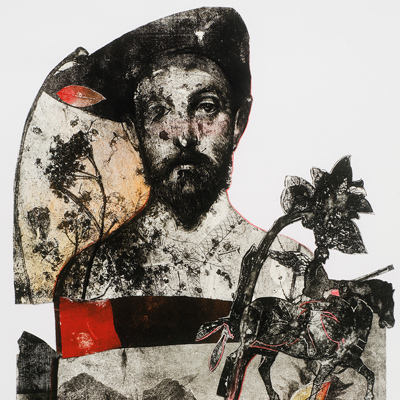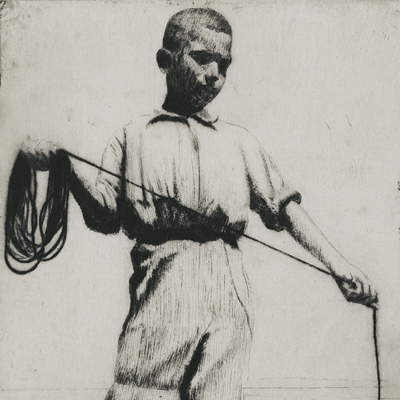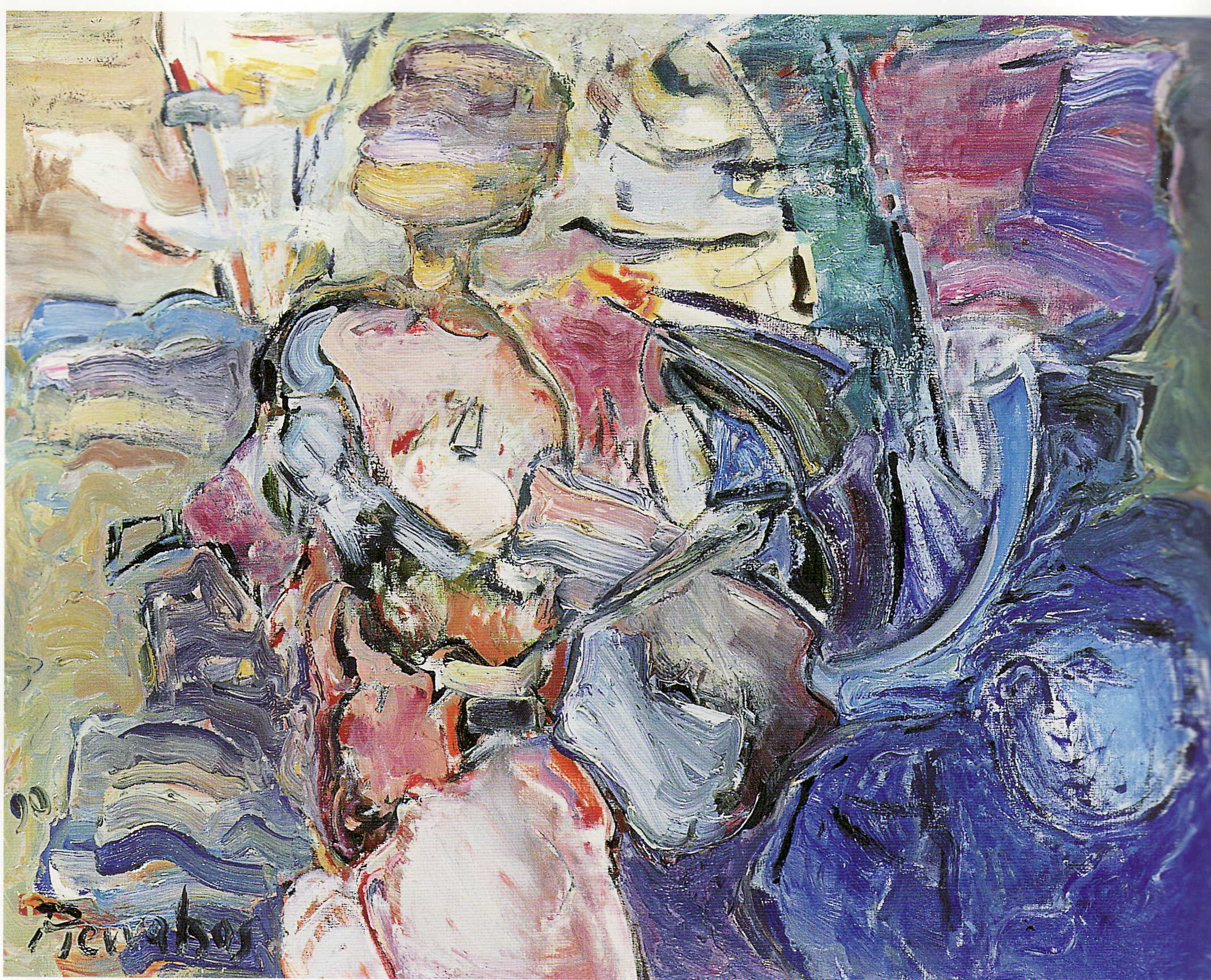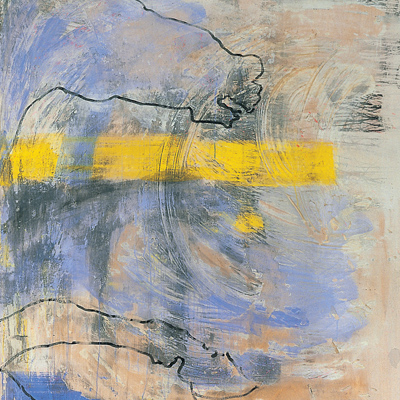Voula Massoura, Banner
Banner by Voula Massoura is part of a series of works titled Banners. The surface of the piece is made of tar paper. The rest of the materials are the same as those used in traditional weaving. The piece falls into the textile art category, where weaving meets earthly, humble and everyday materials.
The Banners series
The piece is part of the series Banners by Voula Massoura. The artist was inspired by her visit to the Famagusta Gate in Nicosia. She envisioned a city full of banners.
This is how she started creating those pieces in 1990. In 1993 she presented the first unit with 18 banners. Their shape brings to mind primitive prizes and medieval war flags.
Originality of materials
Massoura’s works are characterised by their polysemy and large size. The materials she uses, which are highly original, serve that purpose.
The surface of the pieces is made of tar paper. Massoura also uses ropes, plant fibres, cotton, jute, hemp, dried leaves and tree bark.
A step beyond tradition
The materials are the same as those in traditional weaving. However, their unique combination goes beyond the restrictions of tradition.
Through processing, the plant fibres escape the confines of weaving and extend into space. The attempt to create a new identity is noticeably clear in the piece. There is no need to return to the past.
The dual symbolic character of the piece
Banners have a unique, metaphorical nature, which is highlighted by the use of symbols: circle, square, rectangle, X, cross.
Massoura achieves symbolism on 2 levels:
- Christianity.
- Timelessness, as the Banners can be considered timeless symbols of a memorial nature.
Her life in a nutshell
Voula Massoura was born in Chalkida in 1936. She studied Graphic Arts and Painting at Krefeld in Germany, under B.G. Muche and I. Mitscherlich. She then studied in Salzburg, Austria, under H. Trökes.
Initially she started working as a graphic designer and in 1964 she turned to painting. From 1978 onwards she started working on weaving that she studied in Paris.
Artistic influences
Before working on weaving, Voula Massoura worked quite extensively on assemblages made of diverse materials.
In 1978 she studied the tapestry technique in Paris. She then started incorporating techniques and materials from the art of weaving into her work.
Massoura created large installations, with a strong dream-like feeling, and an emphasis on colour and form. These elements speak to her influences from the Bauhaus school.
Features of her work
A unique, personal symbolism marks the works of Voula Massoura. It stems mainly from the plant and geometric elements she incorporates in her compositions.
At the same time, the symbolic character of the pieces is enhanced by elements such as:
- Her knowledge of weaving.
- Her respect for traditional materials.
- The combination of tradition with modern forms.
A recognised artist
Voula Massoura has presented her works in numerous solo exhibitions in Greece and Cyprus. She has also participated in important group exhibitions.
She was honoured by the Academy of Fine Arts of Salzburg in 1972 and at the Alexandria Biennale in 1982.
A typical sample of textile art
The Banners fall into the category of textile art.
In this art form, weaving meets earthly, humble and everyday materials. It is a way to create imposing pieces of high aesthetic value that command space. Pieces that are comparable to any sculpture or assemblage.
The work of art in our publications
The Banner by Voula Massoura is referenced in the publications:
- New Contemporary Works in the Alpha Bank Collection, edited by Irene Orati (in Greek). The publication presents 16 works of art from the Alpha Bank Art Collection. Their common trait is that they were created in the last decades and are relatively new additions to the Collection.
- The Alpha Bank Collection. Greek Art from 1920 until Today, edited by Irene Orati. The publication accompanied the Art Collection’s exhibition at the Macedonian Museum of Contemporary Art in Thessaloniki.
Buy the publication The Alpha Bank Collection. Greek Art from 1920 until Today on the Alpha Bank e-shop. - The Alpha Bank Collection. Greek Art from 1950 until Today (2008), edited by Irene Orati. The publication accompanied exhibitions of the Collection in Nicosia, Limassol and Larnaca in 2008.
- The Alpha Bank Collection. Greek Art from 1950 until Today (2019), edited by Irene Orati and Thomas Begkas. The publication accompanied the same-titled exhibition held at the Municipal Gallery of Ioannina.
In other literature
The Banner by Voula Massoura is referenced in the first volume of the book History of Art in Greece, Painting and Sculpture of the 20th century by M. Papanikolaou (in Greek).
The piece Banner by Voula Massoura hangs at the Alpha Bank central building, at 45 Panepistimiou Street, in the centre of Athens. You can visit it during working days and hours.
Research visits can be organised upon request.
Contact us to book your visit.
